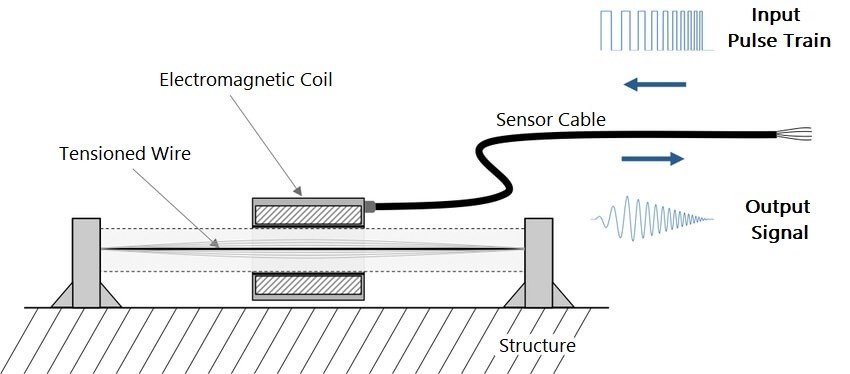Weighing Modules play a crucial role in the world of industrial automation, manufacturing, and process control, where precise weight measurement is critical to ensuring accuracy, efficiency, and safety. One of the most practical solutions for integrating weighing capabilities into tanks, silos, hoppers, and other vessels is the weighing module. These modular systems are engineered to simplify the installation of load cells while enhancing the performance and reliability of the weighing process.
A weighing module typically includes a load cell combined with specialized mounting hardware that supports the structure, absorbs vibration, allows for thermal expansion, and protects against overloads. These systems are widely adopted across industries due to their flexibility and consistent performance. More details about design, specifications, and use cases can be found in this informative guide on weighing module, which offers a closer look at how these units contribute to accurate weight monitoring.
What Is a Weighing Module?
A weighing module is a pre-engineered assembly that houses a load cell within a protective and performance-enhancing structure. Its primary role is to ensure accurate load measurement while accommodating environmental and mechanical challenges such as vibration, misalignment, or thermal movement.
Each module typically consists of:
-
Load Cell: The core sensor that converts force into an electrical signal.
-
Mounting Hardware: Plates, brackets, or frames that ensure proper load transfer and stability.
-
Stabilizing Features: Components such as bump stops, rocker assemblies, and anti-lift protections to maintain alignment and safety during operation.
How Weighing Modules Are Constructed
The construction of a weighing module is driven by the need to deliver consistent accuracy in variable industrial conditions. Key design aspects include:
Robust Materials
Most weighing modules are constructed using stainless steel or alloy steel, offering high resistance to corrosion, chemicals, and mechanical wear.
Load Cell Integration
The load cell is carefully housed within the mounting system to minimize exposure to external forces that could affect its performance. It is precisely aligned to ensure optimal load transfer.
Vibration and Shock Resistance
Mounts may include elastomeric or mechanical damping systems to absorb shocks and vibrations, helping to stabilize the load cell signal and protect sensitive electronics.
Thermal Compensation
Some designs allow for slight movements due to thermal expansion or contraction of the supporting structure, preventing measurement drift or mechanical stress on the sensor.
Performance Benefits of Weighing Modules
Weighing modules offer several significant advantages over individually mounted load cells:
1. Simplified Installation
Weighing modules are designed for straightforward bolt-on installation. They eliminate the need for custom mounting solutions and reduce the risk of misalignment, saving both time and labor.
2. High Accuracy
By managing load alignment and minimizing side forces, weighing modules enable load cells to operate under ideal conditions, resulting in more accurate and repeatable measurements.
3. Improved Safety
Built-in features like anti-lift protections, overload stops, and lateral restraints help maintain system integrity even under dynamic or uneven loading conditions.
4. Versatility
Modules are available in various configurations, capacities, and materials, making them suitable for a broad range of applications from pharmaceutical manufacturing to heavy-duty mining operations.
5. Lower Maintenance
Thanks to their robust design and protective features, weighing modules typically require less maintenance and offer a longer service life compared to standard load cell installations.
Applications Across Industries
Weighing modules can be found in numerous industrial applications, such as:
-
Tanks and Silos: Used for material level monitoring, blending, and batching.
-
Hoppers and Bins: Supporting automated filling and discharge systems.
-
Mixing Vessels: Ensuring accurate ingredient dosing in food, chemical, and pharmaceutical production.
-
OEM Machinery: Integrated into custom-built systems for packaging, filling, and quality control.
-
Conveyor Systems: Embedded to track material flow and weight in motion.
Selecting the Right Weighing Module
When choosing a weighing module for your application, consider the following:
-
Load Capacity: Choose a module that supports the expected load with an adequate safety margin.
-
Material: Use stainless steel in corrosive or hygienic environments and alloy steel in standard conditions.
-
Mounting Configuration: Account for installation space, access, and structural constraints.
-
Environmental Conditions: Ensure the module can withstand moisture, dust, temperature variations, or vibrations.
-
Integration Needs: Verify compatibility with existing weight indicators, PLCs, or control systems.
Installation and Maintenance Advantages
These load cells are typically installed using mount kits that allow for self-centering and alignment, which reduces installation complexity and enhances weighing accuracy. Many models also feature built-in overload and lift-off protection, ensuring operational safety.
Maintenance requirements are minimal due to their sealed construction and high material durability. Periodic calibration and inspections ensure optimal performance over years of continuous use.
Conclusion
A weighing module is more than just a mount for a load cell—it’s a complete solution that ensures accurate, safe, and reliable weight measurement in complex industrial environments. From tank weighing to high-speed production lines, these modules offer the structural support and protective features needed to get the best performance out of your weighing system. By selecting the right module and installing it correctly, businesses can achieve improved efficiency, reduced downtime, and greater confidence in their measurement data.
